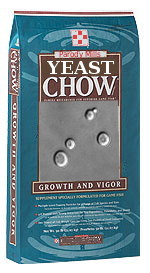Let me pause now for a moment to review what I’ve learned so far:
- Yeast are filthy little jerks
No, seriously. I’ve previously reviewed their promiscuous sex lives,
their sexually-transmitted diseases, and their toiletry habits. Somehow, though I still want to do more brewing, so let’s continue.

- Yeast need to be fed particular sugars
The three major elements needed by pretty much every living thing for “food” are Carbon, Nitrogen (as reduced “amino” nitrogen), and phosphorus (as oxidized phosphate) (Reduced sulfur is also needed in small amounts for proteins). Glucose (“dextrose” or “corn sugar”), fructose, or sucrose (“table sugar”, each molecule of which is made of a molecule of glucose attached to a molecule of fructose) are all used as carbon sources by Saccharomyces yeasts. Possibly also Galactose under certain conditions[1]. Saccharomyces yeasts don’t appear to be able to use lactose (“milk sugar”, each molecule of which is made of a molecule of glucose and a molecule of galactose), so some recipes include lactose in order to ensure there is some residual “sugar” in the mix at the end, for flavor and “body”.
- Yeast need reduced nitrogen (amino nitrogen or ammonia…or urea)
Aside from sugars, this seems to be possibly the most important yeast nutrient. The most
“natural” source of this nutrient would seem to be amino acids or very short peptides (2-5 amino acids long). Apparently urea (carbamide) also makes a good yeast nutrient, but:
- You don’t want TOO much nitrogen available to the yeast, or there’ll be excess urea dumped back into the brew
This could combine with the ethanol to make “ethyl carbamate”, which is considered
a probable carcinogen, at least if it’s present at a high enough level. Obviously if you use urea as a
yeast nutrient, that’s only going to increase the possibility of a problem.
- Saccharomyces yeasts are effectively incapable of using proteins for nutrition.
Proteins can be a source of amino nitrogen (and carbon and sulfur), but like all real microbes, yeast cells cannot just “eat” chunks of protein. They have to be broken down into very small chains of amino acids or even as individual amino acid molecules before the yeast can suck them up and use them. Saccharomyces yeasts do not appear to normally excrete protein-digesting enzymes, so by themselves they cannot make any use of protein for nutrition[3].
- Yeast need oxygen
Oxygen is necessary for making certain components of the cell membrane, in addition to it’s more obvious role in respiration. Without a way to replace used up membrane components, the yeast stop reproducing and eventually fall apart and die. There seems to be some suggestion that to a certain extent one can substitute some raw membrane material for oxygen here (either as “yeast hulls” or possibly even certain of the natural waxes on some fruits).
- If you give yeast oxygen, though, they consume the sugars entirely instead of making alcohol…
…or do they? Between the “Crabtree effect” (when there are high concentrations of glucose, alcohol production continues even in the presence of oxygen) and indications in scientific papers[2], it seems SMALL amounts of oxygen may not be a problem, and might very well be beneficial.
- Yeast need vitamins and minerals
B1 (“Thiamine”) is commonly mentioned, though apparently the need for it varies from strain to strain. Also potentially important are Pantothenic Acid (B5), Niacin (Nicotinic Acid, Vitamin B3), Biotin, Inositol, as well as Potassium, Magnesium, and trace amounts of calcium and a few other minerals[4].
- Unhealthy yeasts are more prone to make (EEK!) Off-Flavors and Off-Odors (EEK again!)
For one thing, it seems to be a general rule that you don’t want your brew sitting on the corpses of dead yeast (the “lees” of wine, or “trub” of beer), because that is a potential source of (insert dramatic music and crash of thunder here)Off-Flavors and Off-Odors. Yeast dying and falling apart is also a major source of urea being dumped into the brew, too. Some strains of yeast under certain conditions, such as insufficient pantothenic acid, may be prone to producing nasty-smelling sulfides as well.
So, in most cases what we want to do when brewing is keep our yeast as alive and happy as possible, and get them to hurry up and finish our primary fermentation before they start dying off. Coming up: My (as yet untested) plot for accomplishing this – without specialized scientific equipment or materials.
[1] Wilkinson JF: “The pathway of adaptive fermentation of galactose by yeast” Biochem J. 1949; 44(4): 460–467
[2] Nagodawithana TW, Castellano C, Steinkraus KH: “Effect of dissolved oxygen, temperature, initial cell count, and sugar concentration on the viability of Saccharomyces cerevisiae in rapid fermentations.” Appl Microbiol. 1974 Sep;28(3):383-91.
[3] Bilinski CA, Russell I, Stewart GG: “Applicability of Yeast Extracellular Proteinases in Brewing: Physiological and Biochemical Aspects.” Appl Environ Microbiol. 1987 Mar;53(3):495-499.
[4] Fugelsang KG, Edwards CG: “Wine Microbiology: Practical Applications and Procedures” 2007; Springer Science+Business Media LLC, New York; pg 17
